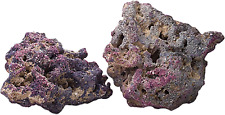Barking at the Door – Will My Dog Ever Stop?
Have you ever had that one obnoxious person in your family with a bad habit? As your family member, you probably love them dearly but the habit is creating some strain on your relationship. What do you do? When it comes to dealing with human family members, this can be tricky.
If that obnoxious family member is none other than your fur baby…there are some things that you can do to directly mend your relationship and curb the bad behavior.
Barking is one of the most common issues that people have with their furry family members. Dogs bark and it is a natural thing for them to do. Some breeds bark more than others. Dogs bark in order to tell us something or to communicate with each other. Dogs often bark in response to things that we can’t sense – things we can’t hear, see or smell that your dog can.
Barking can become a nuisance and a strain on your relationship not only with the dog, but with other people. Barking is disruptive, especially when it is excessive. But how do you stop it?
Breaking the Habit
While there is no sure cure, there are some measures that you can take to prevent excessive barking.
Dogs that bark excessively or become increasingly agitated while barking are often in the midst of an adrenaline ‘high’. Behaviorists think that adrenaline highs are addictive to dogs. If your dog is barking excessively at the door, it is important to remove these dogs from the door, or have them under your positive control, as they are prone to becoming aggressive once the door is opened. This interruption also helps to break the flow of adrenaline.
We love dogs because they become so fiercely bonded to us and to their home. Barking at the door comes naturally to most – if there is a sudden movement or sound outside of the door, this puts your precious pooch on the alert. Dogs are still prized as protection and barking is an important part of that.
Brief barking is okay and an expected response to something new or different. A dog that stops barking soon after someone arrives at the door has developed self-control or has determined that what caused him to bark is not a threat. Some dogs do this naturally, but most have to work at it.
Let’s take a look at some of the most common barking scenarios:
Home Alone
Many dog owners only know that their dog barks at the door while they are away because a neighbor reports the noise. If your dog barks at the door or elsewhere in the home while you are away, there are some measures you can take to correct it. If the barking only occurs when your neighbor walks by the door to your flat on the way to his, consider crate training your dog and restricting free access to the front door.
While most bark collars or shock collars are not recommended by veterinarians, trainers or behaviorists, some advocate the use of spray collars. Spray collars can work for dogs that bark excessively while the owner is away. When the dog barks, the collar sprays a little citronella, lemon juice or water in front of the dogs nose and face. This is a deterrent to help prevent them from barking. If they bark, they get sprayed in the face, if they are quiet – they don’t. It works well for some dogs but others don’t seem to care and keep barking.
Company’s Coming
If you know that company is coming, it is best to prepare yourself and your dog. Let your guests know in advance that you are working with your dog on the barking and that they should expect a delay in your response to their knocking or ring.
Make sure that every encounter at the door is a positive one. Reward your dog heavily with treats when he is calm and not barking. When the door bell rings, say your dog’s name and then step away from the door. Ask your dog to come to you and once he steps towards you, give a treat while making eye contact. Repeat this at least three to five times before you open the door. He should be quiet and focused on you. Then have him under your positive control and open the door to your guests.
Final Review
It takes patience and persistence to teach a dog not to bark, either at the door or otherwise in the home. Using highly-desired treats as rewards can go a long way. If you are home and committed to actively teaching your dog not to bark, make a couple of zip-top baggies of treats to carry in your pocket. Tiny pieces of cheese, hot dog, apple or even your dog’s own kibble can be used. When your dog starts to bark, call them to you, reward them with a treat and say “no bark”. Repeat this every time they bark. It takes time, but for many dogs, they will learn to control when and how much they bark.













